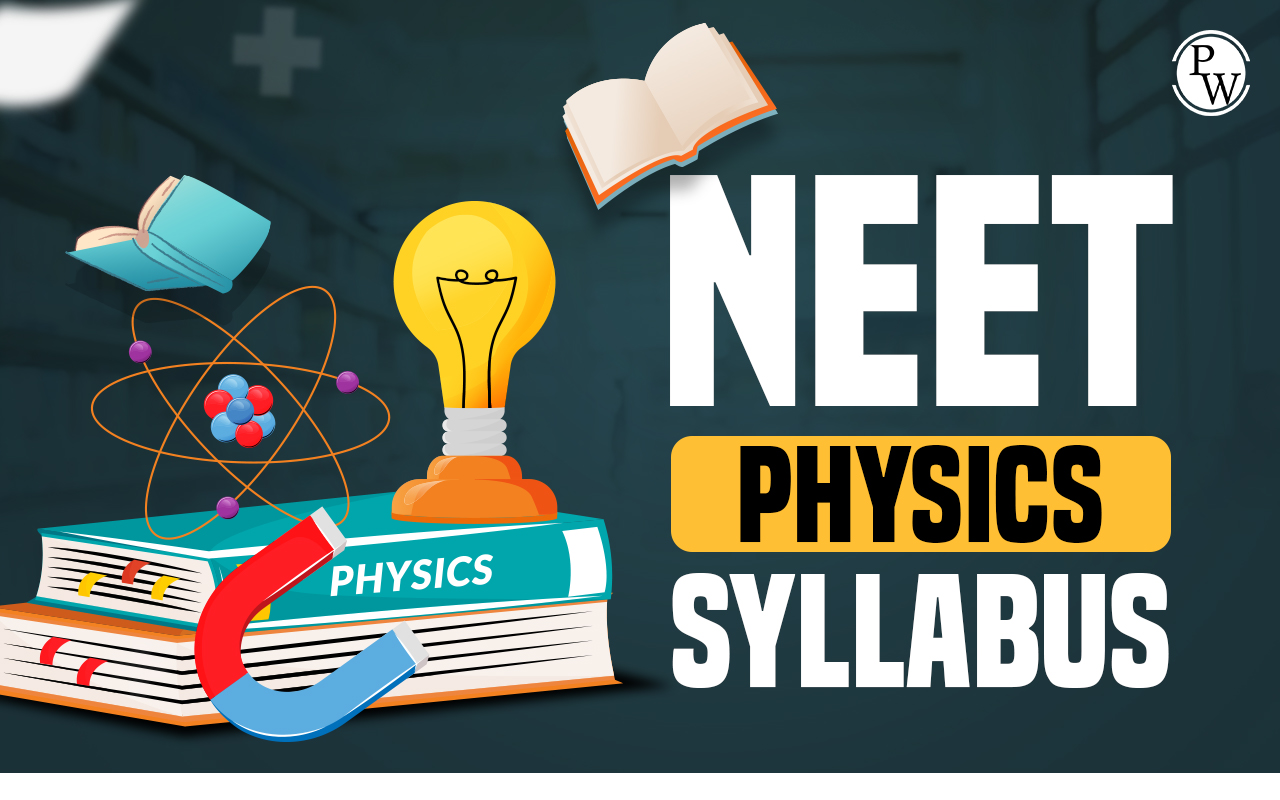
Neural Control and Coordination NEET Questions: Neural Control and Coordination is a part of the Class 11 Biology syllabus and is included in NEET every year. This chapter helps students understand how our body works with the help of the brain, spinal cord, nerves, and sense organs. The topic might seem a little tricky at first, but with the right understanding and regular practice, students can score well in this area. In the NEET exam, around 2% of the total questions come from this chapter. This means out of 180 questions, around 3–4 questions can be expected from here. Practicing NEET questions from this chapter is important because it helps students revise important terms and concepts, improve speed, and build confidence.
Neural Control and Coordination NEET Questions Overview
Neural Control and Coordination explains how the brain and nerves control different parts of the body. Students will read about neurons, the structure of the brain, spinal cord, reflex action, sense organs, and the role of neurotransmitters.
To understand this chapter better, students should go through Neural Control and Coordination NEET notes. These notes will help in quick revision. Also, solving previous year questions (PYQs) will give an idea about the type of questions asked in NEET and what to focus on.
Download Last 5 Years NEET Previous Year Question Papers PDF
Free NEET PYQ PDF
What is Neural Control and Coordination?
Neural Control and Coordination means how our body parts work together with the help of the brain and nerves. The nervous system controls everything we do — walking, talking, eating, and even breathing. This system includes:
-
Neurons (nerve cells): These carry messages from one part of the body to another.
-
Brain and spinal cord: They control actions.
-
Reflexes: These are quick actions without thinking, like pulling your hand away from something hot.
-
Sense organs: Eyes, ears, nose, tongue, and skin help us to sense things around us.
| NEET Exam Important Links | |
|---|---|
| NEET Syllabus | NEET Biology Notes |
| NEET Eligibility Criteria | NEET Exam Pattern |
| NEET Previous Year Question Papers | NEET Biology Syllabus |
Neural Control and Coordination NEET Questions with Explanations
Here are some practice questions from the chapter, along with answers and explanations:
Q1. The neural system of all animals is composed of highly specialised cells called neurons, which can:
-
detect different kinds of stimuli
-
transmit different kinds of stimuli
-
receive different kinds of stimuli
-
All of these
Answer: (D) All of these
Explanation: Neurons are specialized cells that can detect, receive, and transmit different types of stimuli. They help in sensing the environment and passing information to the brain for interpretation.
Q2. The respiratory and cardiac centres are located in:
-
cerebrum
-
diencephalon
-
cerebellum
-
medulla oblongata
Answer: (D) Medulla oblongata
Explanation: The medulla oblongata is a part of the brainstem and plays a crucial role in controlling vital functions such as respiration, heartbeat, and blood pressure regulation.
Q3. Which of the following given options is/are correct for the term coordination?
-
Coordination is the process through which one or two cells only interact and complement the functions of one another.
-
Coordination is the process through which two or more organs interact and inhibit the functions of the others.
-
Coordination is the process through which two or more organs interact and complement the functions of one another.
-
All of these
Answer: (C) Coordination is the process through which two or more organs interact and complement the functions of one another.
Explanation: Coordination involves the interaction of different organs that work together to maintain body functions. The correct answer is the option where organs complement each other’s function
Q4. In the resting state of the neural membrane, diffusion due to concentration gradients, if allowed, would drive:
-
into the cell
-
and out of the cell
-
into the cell
-
out of the cell
Answer: (C) Into the cell
Explanation: In the resting state, the concentration gradient of ions like sodium and potassium causes the diffusion of sodium ions into the cell, while potassium ions diffuse out.
Q5. Identify the given diagram and mark the correct option.
-
Unipolar neuron
-
Multipolar neuron
-
Bipolar neuron
-
None of these
Answer: (B) Multipolar neuron
Explanation: Multipolar neurons are the most common type of neurons in the human body, and they have many dendrites and one axon.
Q6. Read the following statements and mark the correct option.
I. A deep cleft divides the cerebrum horizontally into two halves, which are termed as the left and right cerebral hemispheres.
II. The layer of cells which covers the cerebral hemisphere is called cerebral cortex and is thrown into prominent folds.
III. The neuron cell bodies are concentrated in cerebral cortex, giving it a greyish appearance.
IV. The cerebral cortex contains motor areas, sensory areas, and small regions that are neither clearly sensory nor motor in function.
-
Only I is correct.
-
Only I and II are correct.
-
Only II and III are correct.
-
Only III and IV are correct.
Answer: (B) Only I and II are correct.
Explanation: The cerebral cortex has both motor and sensory regions, and its greyish appearance is due to the cell bodies of neurons.
Q7. The axonal membrane is ______ to negatively charged protein present in axoplasm.
- selectively permeable
- permeable
- semipermeable
- impermeable
Answer: (A) Selectively permeable
Explanation: The axonal membrane is selectively permeable, meaning it allows only certain ions to pass through while restricting others.
Q8. The myelinated nerve fibers are ______ in Schwann cells, whereas the non-myelinated nerve fibers are ______ by Schwann cells.
-
enclosed, enveloped
-
enveloped, enclosed
-
enveloped, not enclosed
-
enclosed, not enveloped
Answer: (D) Enclosed, not enveloped
Explanation: In myelinated fibers, Schwann cells enclose the nerve fibers, while non-myelinated fibers are not fully enveloped but may have Schwann cells surrounding them.
Q9. A nerve impulse is transmitted from one neuron to another neuron through a junction called:
-
neuromuscular junction
-
synapse
-
node of Ranvier
-
both (A) and (B)
Answer: (B) Synapse
Explanation: The synapse is the junction where two neurons meet, and it allows for the transmission of nerve impulses between them.
Q10. Which of the following statements is incorrect?
-
In Hydra, neural organisation is composed of a network of neurons.
-
The axon is a long fibre.
-
The PNS comprises all the nerves of the body associated with the ANS.
-
A neuron is a microscopic structure.
Answer: (D) A neuron is a microscopic structure.
Explanation: Neurons are microscopic, but they can also have very long axons, especially in certain animals, where they can extend over large distances.
Q11 Hypothalamus lies at -.
-
base of thalamus
-
base of cerebellum
-
top of thalamus
-
top of cerebellum
Answer: (A) base of thalamus
Explanation: The hypothalamus is located just below the thalamus in the brain. It controls functions like hunger, thirst, body temperature, and emotions. It forms the floor of the diencephalon.
Q12 Given below are two statements:
Statement I: The ventral protion of the midbrain consists of four round swellings.
Statement II: Cerebellum provides the additional space for many more neurons.
In the light of the above statements, choose the most appropriate answer from the options given below:
-
Statement I is correct but Statement II is incorrect.
-
Statement I is incorrect but Statement II is correct.
-
Both Statement I and Statement II are correct.
-
Both Statement I and Statement II are incorrect.
Answer: (B) Statement I is incorrect but Statement II is correct.
Explanation: Statement I is wrong because the dorsal part (not ventral) of the midbrain has four round swellings called corpora quadrigemina. Statement II is correct because the cerebellum has more surface area due to folds and thus contains many neurons.
Q13 Identify the proper sequence and mark the correct option.
I. Opening of ion channels.
II. Release of neurotransmitters.
III. Action potential arrives at axon terminals.
IV. Action potential stimulates movement of synaptic vesicles towards the membrane.
V. Binding with receptors, present on postsynaptic membrane.
VI. New action potential generated.
-
I → II → III → IV →V→VI
-
VI→V→IV→III→II→I
-
III → IV → II →V→I→VI
-
III → I → IV →V→II→VI
Answer: (C) III → IV → II →V→I→VI
Explanation: First, action potential reaches the axon terminal. Then, synaptic vesicles move to the membrane and release neurotransmitters. These neurotransmitters bind to receptors, which opens ion channels and creates a new action potential
Q14 Where are bipolar nerve cells present?
-
Cerebral cortex
-
Usually in embryonic stage
-
Retina of the eye
-
All of these
Answer: (D) All of these
Explanation: Bipolar neurons are found in the retina, sometimes in the cerebral cortex, and are also common during the embryonic stage. They have two extensions—one axon and one dendrite.
Q15 Read the following statements and mark the correct option.
I. At electrical synapses, the membranes of presynaptic and post-synaptic neurons are in very close proximity.
II. Electrical current can not flow directly from one neuron into the other across these synapses.
III. Transmission of an impulse across electrical synapses is very similar to impulse conduction along a single axon.
IV. Impulse transmission across an electrical synapse is always slower than that across a chemical synapse.
V. Electrical synapses are rare in our system.
-
Only statement I is correct.
-
Statements I, III and V are correct.
-
Only statement V is correct.
-
All the given statements are correct.
Answer: (B) Statements I, III and V are correct.
Explanation: Electrical synapses have very close membranes, allowing direct flow of current, so statement II is incorrect. Impulse transfer is faster, not slower, making statement IV incorrect. Statements I, III, and V are all true.
Prepare for NEET with PW Online NEET Coaching! Our courses offer structured lessons, clear explanations of concepts, and interactive classes to support your NEET preparation effectively.
Neural Control And Coordination NEET Questions FAQs
What is neural control and coordination?
Is neural control and coordination important for NEET?
What is neuronal control?
What are the steps of neural control?
What is neural control of behaviour?










